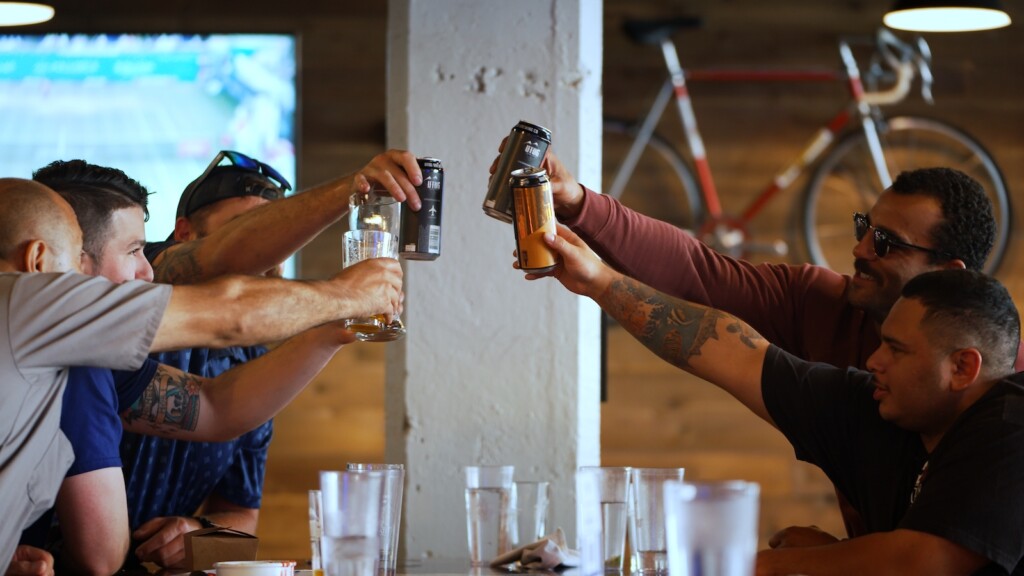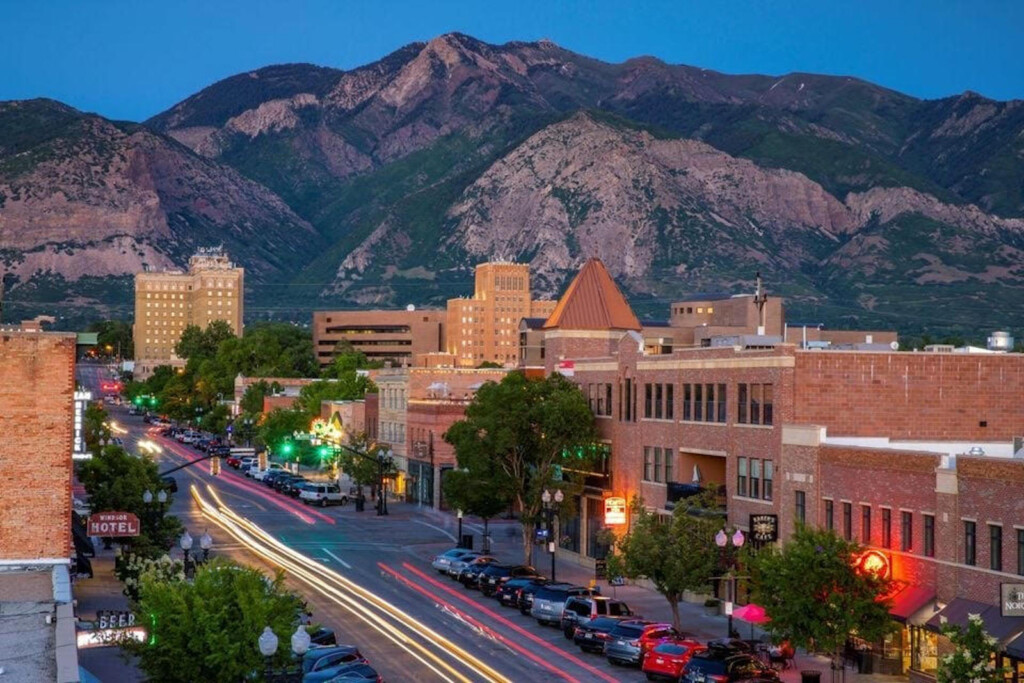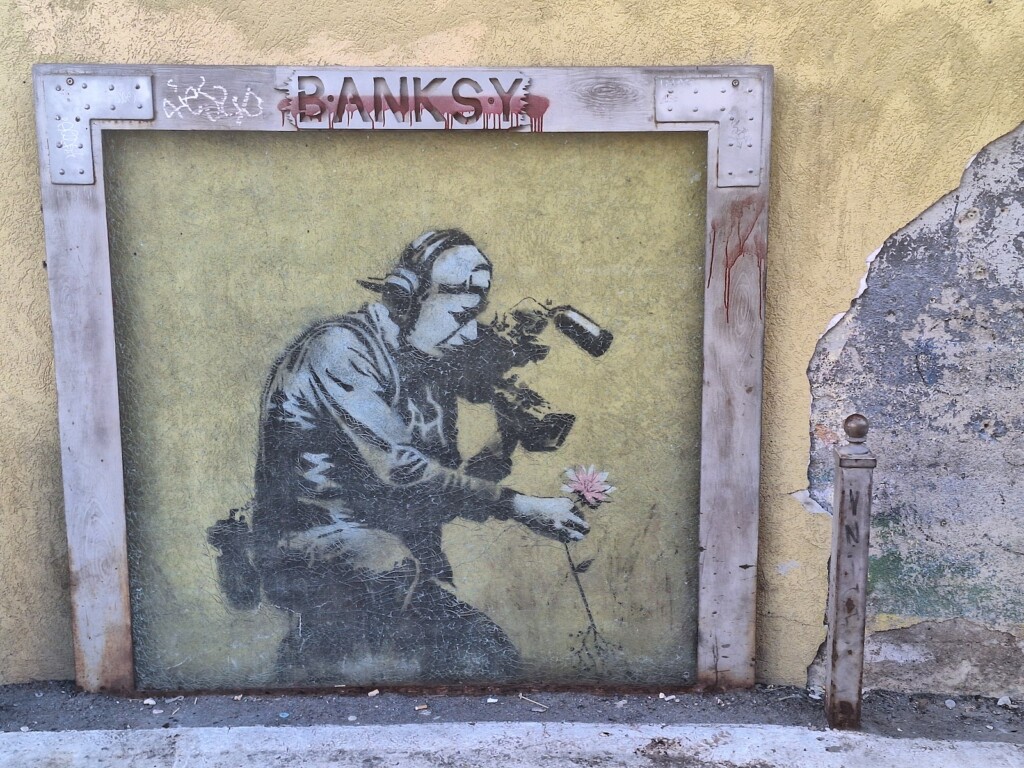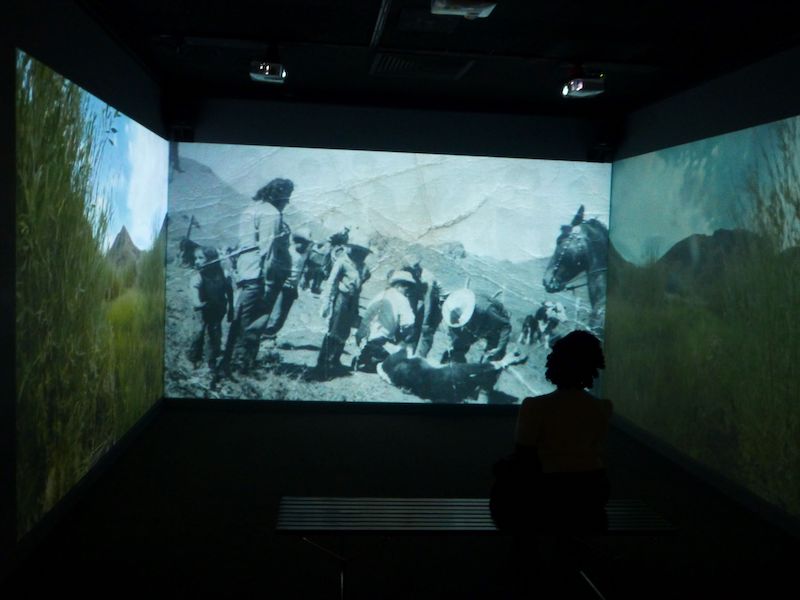
We’ve sluggishly pushed through the dreaded Omicron surge this winter, but the light has emerged at the end of the tunnel for art-lovers. On Friday February 18th the UMOCA downtown re-opened its doors to great fanfare with five brand new exhibits. The jet-set was out with the student body and general public alike into a raucous and lively set courtesy of DJ Shaadie. Exhibits ranged from the soulful and poignant, like Lilly Agar’s A Hug Away and Myleka Bevens We’re going to Talk About It, to the downright whimsical—there was a meditative disco chamber on the bottom floor for your inner superfly Tibetan monk.
Connection to our heritage is a big deal—we can use sites like Ancestry.com and 23andme.com to trace our bloodline to an Irish farmer fleeing the great famine of 1848 or a dutch merchant plying his trade in old New Amsterdam. But it can be easy to overlook the narratives of the original inhabitants of America, pre-colonization. Many names are used, but the term “First Peoples” is most to the point.
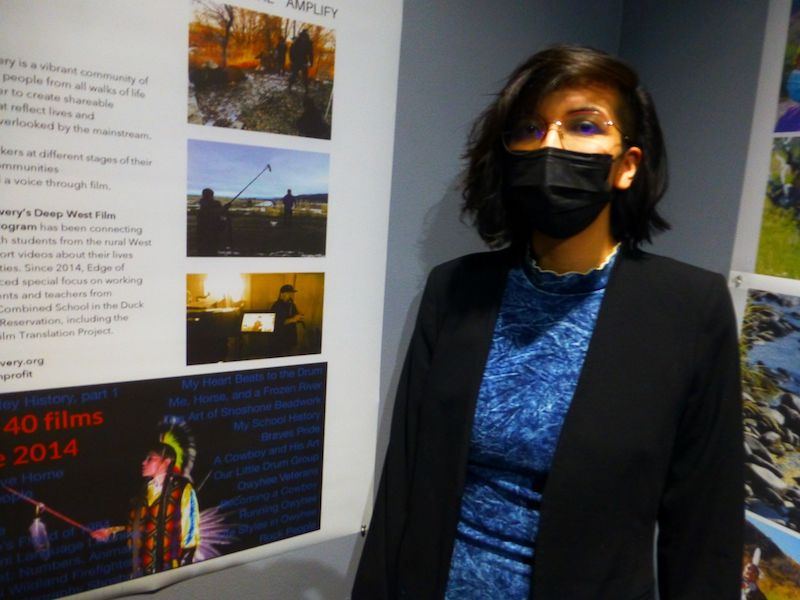
This brings me to one of the aforementioned five exhibits: Shattering the Pictures in Our Heads. The creator and artist, Karem Orrego (previously a festival coordinator who worked for Utah Stories), spoke with me here on opening night about her process and own aims in the exhibition.
“I was inspired by Carol Dalrymple, founder of the Edge of Discovery project who was already working with the Shoshone-Paiute tribes. I was focused on the idea of a difficult past, how to survive it. It wasn’t only about making short films, but empowering youth and exploring Native American representation with technology.”
Karem’s exhibit which presents a 360-degree video “cube” of personal narratives of the Shoshone-Paiute tribe of Duck Valley Reservation in Idaho, intercut with archival footage of popular stock types of the so-called “Indian” in much of our popular 20th century media—the noble savage, the bloodthirsty warrior, the sage medicine man, the doe-like ingénue. It challenges the viewer presenting many of the caricatures that have been hammered into our collective consciousness through decades of popular TV & film westerns.
“In Latin America, we also had a history of being colonized. Different peoples, but same story. We expanded the project from one short film into a larger conversation with other native Americans about the trauma of what it’s like to live in a place that tries to isolate them. Some were survivors of boarding schools.”
As a native Peruvian Karem is a person of color herself and initially a foreigner to Utah, so she knows something about “shattering” preconceptions. Her initial impression of America’s Indigenous peoples was in fact based on old cowboys and Indian films that her grandfather was a fan of.
“When I first attended the reservation people were in awe of what I was doing and very curious. I was still in college and had some trepidation myself about what to expect. But the residents just want others to listen to their story, same as anyone, and we’re hoping to share that.”
One part of the video has a photographer framing the subjects in a shot. You overhear: “Do they need to look more stoic?” The idea of the authentic “stoic” Indian is an archetype that can be traced back to Edward Curtis, a photographer from the late 19th and early 20th centuries who always posed his native subjects as grim and unsmiling. A myth perpetuated even by other indigenous peoples as seen in a conversation between Victor and Thomas about being a “real Indian” in the late 90s cult film Smoke Signals. But as we watch Orrego’s subjects break into laughter and an easy smile the stoic “real Indian” is just that—a myth.
“We may be from different places but there is still a connection on the subject of being misunderstood or misrepresented. I made sure to listen to my students’ stories and be genuine. They had moments of laughter, happiness, and curiosity. I was there to support and get inspired by them.”
Karem attended the U of U before eventually graduating in 2016 with a bachelor degree in Film and Media Studies. She recommends everyone see Reservation Docs (a new FX TV series that first aired in 2021 using all indigenous writers and directors) and to stay tuned for more projects in the parent program Edge of Discovery.
Shattering the Pictures in Our Heads runs at UMOCA through April 30th, 2022.
RELATED CONTENT
Studio Artistic: An Immigrant Story That Will Make You Believe In The American Dream Again
Art for Hope: Sugar House Public Art Project
Artist Havoc Hendricks: Making a Living by Drawing on Walls
Artist Samantha Long: Love of Whimsy
Utah Artist Bridgette Meinhold’s Transition: From Engineer to Artist
David and Brigitte Delthony: Couple Brings International Touch to Escalante Art Scene
Subscribe to Utah Stories weekly newsletter and get our stories directly to your inbox


